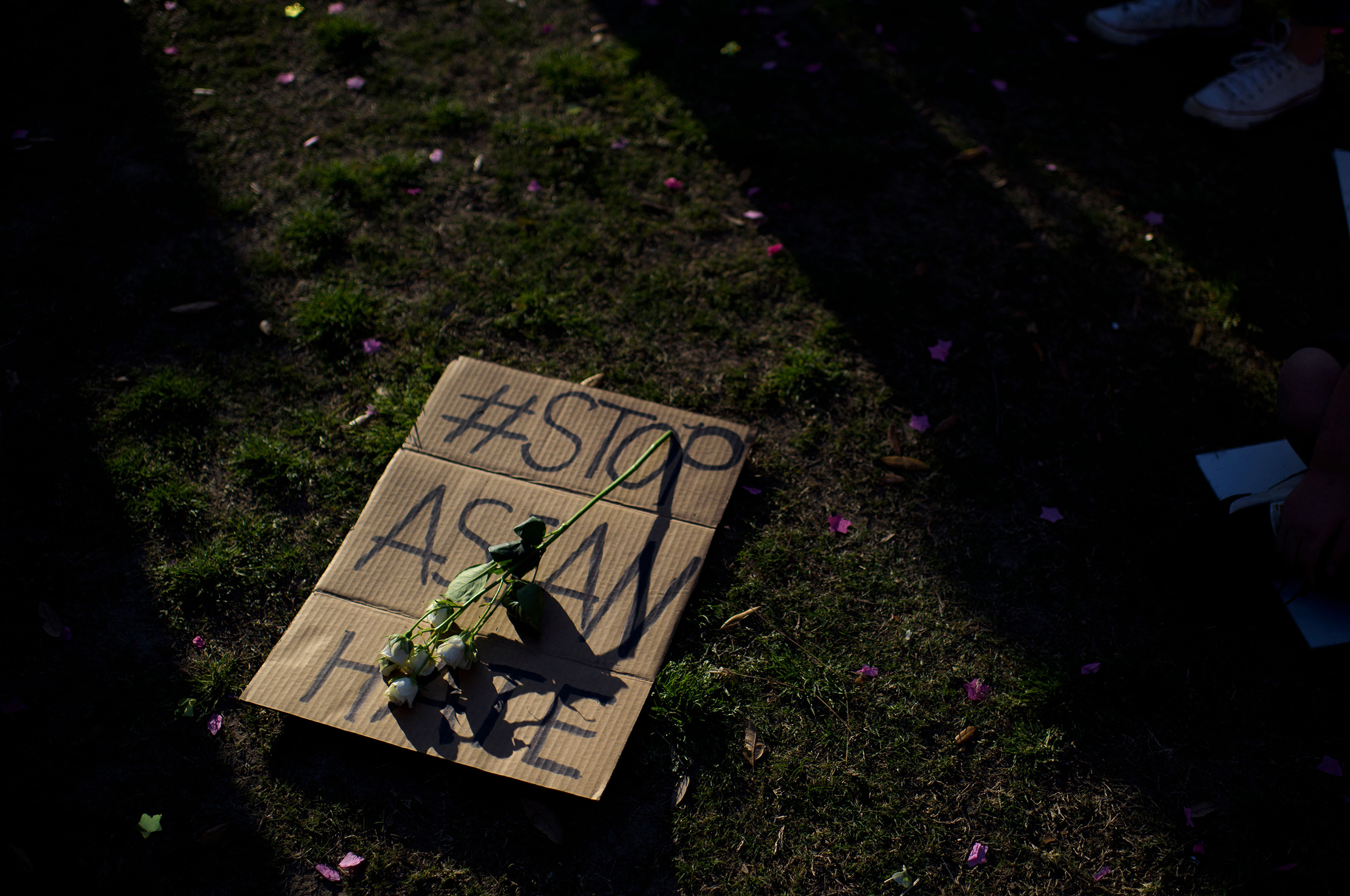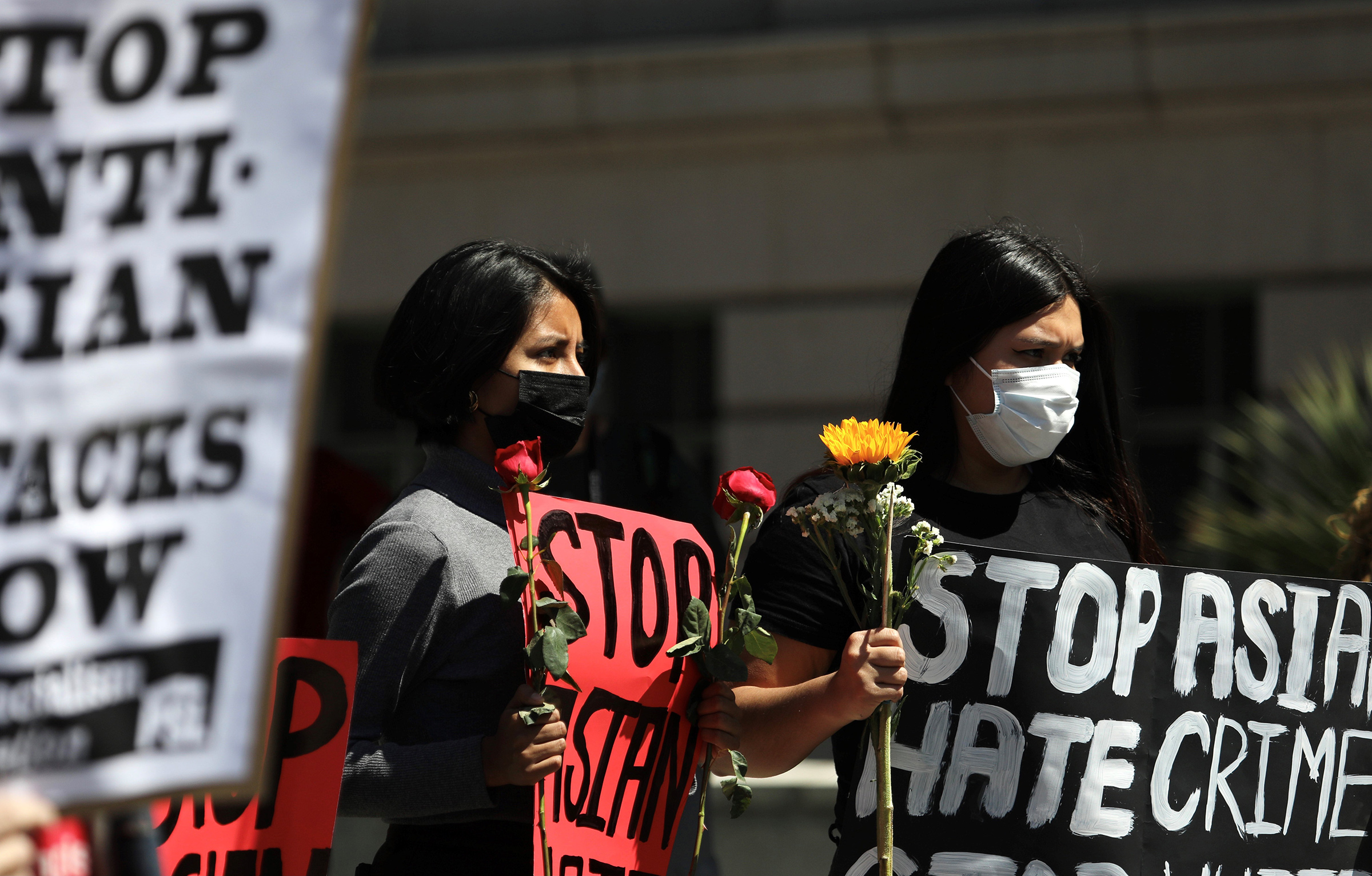
Ambition saturates my earliest memories. I was a parody of the so-called “model” minority. As a pre-teen, I scribbled journal entries about my Ivy League dreams. In high school, whenever I visited Boston for debate tournaments, I made a pilgrimage to touch the famous “lucky” foot of the John Harvard statue on which, I later learned, freshmen boys like to urinate.
Once I made it to the Promised Land—Yale, where I met my fellow high achieving brown doppelgangers—I became one of the poster children for the Indian American success story.
I have since soured on that story, which is often held up to prove the model minority myth true. Americans have finally begun to see the dangers of this myth. Since the start of the pandemic, anti-Asian violence has mounted, yet it did not rise to the status of national emergency until a white terrorist killed six working class Asian women. This was a failure of the American imagination, and a familiar one—anti-South Asian and Arab violence was treated as a footnote after 9/11, too. A white man once told me he “dared” me to prove that those early 2000s hate crimes were “statistically significant.” What he meant was that I, as an Asian striver, served as proof that Asian Americans belong, and that occasional racism was an aberration. In the wake of the Atlanta shootings, a belated discourse has arisen about the inadequacy of the phrase “Asian American,” which so carelessly lumps in Hmong refugees with rich Indians—two distinct communities whose experiences cannot be conflated. A wealthy Asian American working in tech encounters a racism cushioned by class privilege, unlike the racism faced by Asian Americans working in spas, nail salons, gas stations, or liquor stores.
Another aspect of rewriting requires Asians and non-Asians alike to see how such a narrative is dangerous for even the “models” it ostensibly benefits.
Indian Americans from my subculture—usually wealthy, dominant-caste Hindus—often actively embrace stories casting ourselves as America’s great successes, as the outsiders who confirm the meritocratic American dream. Family WhatsApp groups keep veritable scorecards of famous desis, as though Vice President Kamala Harris or Surgeon General Vivek Murthy were cousins on whom to lavish clannish pride.
More from TIME
But in all this self-congratulation I worry that many desis are missing the costs of our ascent. This uncritical veneration of ambition and success takes a toll, leaving psychological and moral wounds. It can damage mental health, causing those who don’t meet the community’s standards for “success” to believe themselves failures; some are ostracized or outcast. This achievement obsession can also beget greed, causing those who are prosperous high achievers to believe they are the elect.
The second consequence is civic: if all we want is to belong to America, we risk becoming a technocratic and insular elite. Our acceptance of the damaging “model” minority myth permits it to run rampant, harming working-class Asians, undocumented immigrants, Dalit people, refugees, and many more.
It’s essential to understand that desis’ status in America is not a natural result of immigrant hustle. Many of the earliest South Asian arrivals to the U.S., who came in waves between the late 18th and early 20th centuries, were “unskilled” ship hands, farmers, lumber workers, and factory employees; some became anti-colonial and anti-racist activists. But racist fears, including of “ Yellow peril” and “Dusky peril,” kept Asians from emigrating between 1917 and 1965. As documentarian Vivek Bald recounts in Bengali Harlem and the Lost Histories of South Asian America, Indian Americans who lobbied Congress to re open borders midcentury promised that future desis would bring not more unskilled labor or political agitation but scholarship, business, and scientific expertise to America. Shrewd advocates conjured a dreamscape of respectable, highly educated, model minorities—many of whom would come from India’s dominant castes.
The fantasy was realized in 1965, when the Immigration and Nationality Act was passed, lifting bans on Asian entry. The reforms were partly a Cold War salvo, aiming to help the U.S. keep up with the Soviets, writes historian Vijay Prashad in his niche classic The Karma of Brown Folk. Indian engineers abetted brain gain while Indian doctors powered just-launched Medicare and Medicaid. India is not itself a nation of doctors, engineers, and entrepreneurs, but often, those are the qualifications required to stand a chance at the American dream. Author Devesh Kapur estimates Indian America is nine times more educated than the motherland. As Arun Venugopal writes in The Atlantic, the contemporary diaspora is the result of “an intense form of social engineering, but one that went largely unacknowledged.”
What does social engineering do to our inner lives? It restricts our imagination—and, therefore, our freedom.
In my case, growing up in a bubble of highly educated, well-off Indians in the 1990s and 2000s, I had no sense that immigration policy had sculpted a cult of upward mobility breeding spelling bee champions and STEM whizzes. Like many millennial desis, all I knew was that academic and professional success were who we were. Having so little vocabulary for selfhood, I and others like me clung to the sole fact we knew about ourselves: we achieved in those arenas like our lives depended on it.

In some ways, life did depend on achievement. Accomplishment had earned many of our parents’ visas. It certainly helped my doctor parents emigrate in the late 1980s. (Such accomplishment—i.e. degrees from top engineering or medical colleges in India—was also easier to come by for those who already had some socioeconomic or caste-based privilege. This is another example of social engineering, which takes place before Indians even get on the plane.) Once here, professional bona fides insulated the first generation from some xenophobia. In the post-9/11 era, when my community was all too aware that anyone presenting as Muslim—especially Sikh American men whose turbans signaled “foreigner”—was at risk of violence or discrimination, aunties and uncles with MDs took care to introduce themselves as “Doctor.” It was both a survival instinct and a way to grease social situations. When my peers and I started getting into fancy schools, our parents felt not just relief, but a sense of safety.
And yet certain ghosts tailed us. Over the years, I saw many “model” minorities burn out; some died by suicide. The substance that propelled us to our powerful perches could dry up, almost without warning.
I lived this. Through high school, college, and young adulthood, seemingly minor missteps—a bad grade, a lost debate—toppled me into downswings. Often, I worried I would not find my way out. When I was 21, I finally told a white therapist how destabilizing it felt to under-achieve, even slightly. She inquired, with an air of defeat: “Is this a cultural thing?”
Sort of. When I was growing up, psychologists were noticing a mental health “crisis” among Asian American students. Today, we have slightly more language, such as the “achievement paradox,” which refers to falling short of expectations held by both Asians and non-Asians. (Its brutal inverse: society often expects too little of Black Americans.)
Identity—the inner life—is fatally serious. According to the National Alliance on Mental Illness, suicide is the leading cause of death among Asian Americans between 20 and 24. A study in the Asian American Journal of Psychology found that among a sample of college students, Indians had higher rates of suicidal ideations than other South Asian Americans. I was a child the first time I heard of suicide in my community. By college, suicide had become another unwelcome, yet always lurking figure in our world. Something separates how we are seen as in public—successful and striving—from how many of us feel in private: unsettled. I cannot trace each tragic death to achievement worship—and one study found that collectivism in Asian communities may prevent suicide—but it’s become clear that ambition, so essential to make a home for oneself in America, is also toxic.
Some blame so-called tiger parents for demanding too much from their children. But while the immigrant burden is shouldered by those within the community, it’s also placed on us by a system that demands excellence of people of color while allowing many white Americans to be mediocre.
As a writer, I place some faith in new narratives to suck out the poisons of ambition and to complicate our public story. I can only hope that Indian Americans, Asian Americans, and all Americans look more closely at our collective stories to understand that, for many, the need to achieve both makes and unmakes us.
More Must-Reads from TIME
- Cybersecurity Experts Are Sounding the Alarm on DOGE
- Meet the 2025 Women of the Year
- The Harsh Truth About Disability Inclusion
- Why Do More Young Adults Have Cancer?
- Colman Domingo Leads With Radical Love
- How to Get Better at Doing Things Alone
- Michelle Zauner Stares Down the Darkness
Contact us at letters@time.com